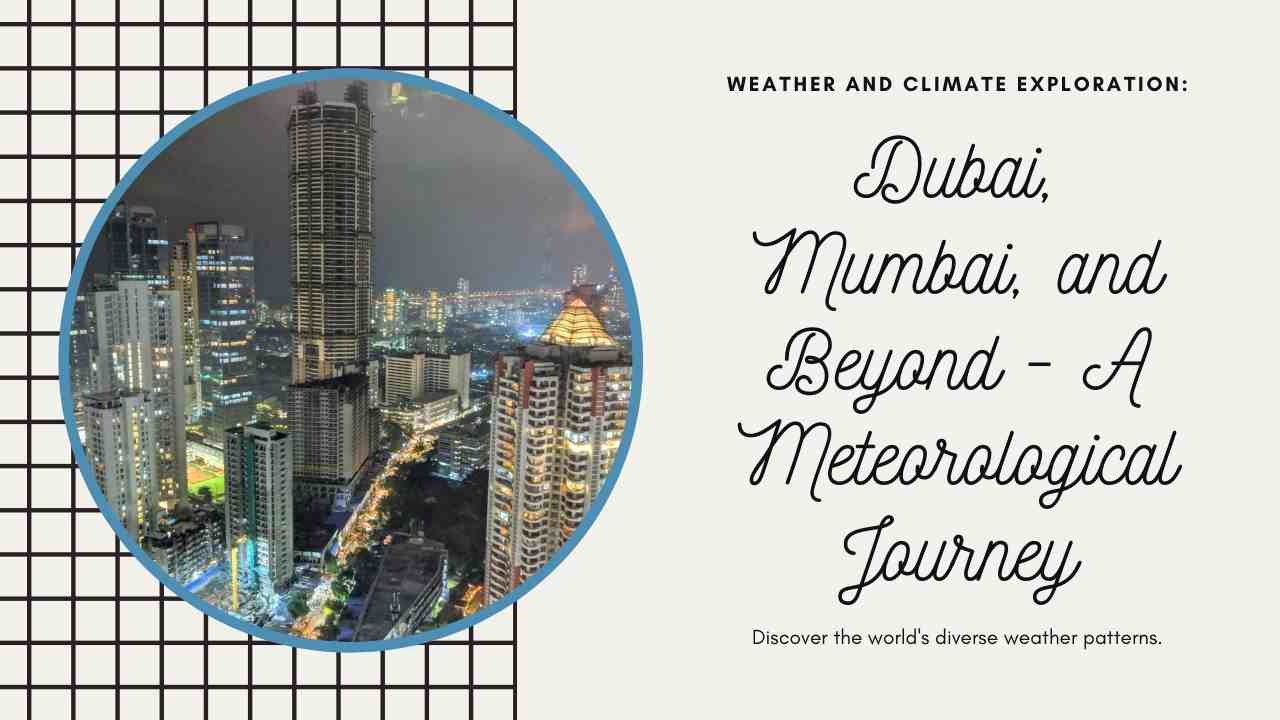Exploring Weather and Climate: Dubai, Mumbai, and Beyond

Welcome to our comprehensive exploration of weather and climate in two vibrant cities: Dubai and Mumbai. From the scorching heat of the desert to the monsoon rains of the coast, we'll delve into the unique weather patterns that shape these urban landscapes. Join us as we journey through the science, impacts, and resilience strategies related to weather phenomena in Dubai, Mumbai, and beyond.
1. Dubai Weather Insights: Dubai, a beacon of modernity in the UAE, experiences a climate that oscillates between desert heat and coastal influences. Currently, the weather stands at 75°F with a RealFeel® of 73°F, alongside partly sunny conditions and an eastward wind at 20 mph. Despite the allure of its skyline, Dubai often grapples with poor air quality, particularly noticeable during showery weather1.
2. Comparing Kolkata and Dubai Weather: Contrasting Kolkata's tropical climate with Dubai's arid environment offers intriguing insights. While Kolkata experiences higher temperatures and humidity levels, Dubai's coastal proximity and higher UV index present distinct weather dynamics2.
3. Mumbai’s Climate: Mumbai, India's bustling financial capital, embraces a tropical wet and dry climate. Today's temperature ranges from 76°F (maximum) to 63°F (minimum), with intermittent showers expected throughout the day. The city's weather resilience is tested annually during the monsoon season, highlighting the importance of adaptive infrastructure and urban planning1.
4. Cloud Seeding and Dubai’s Rainfall: Dubai's quest for water sustainability has led to innovative solutions like cloud seeding. By augmenting rainfall through scientific intervention, Dubai aims to alleviate water scarcity issues. While the efficacy of cloud seeding remains under scrutiny, it exemplifies the city's proactive approach to climate adaptation.
5. Dubai Floods and Resilience: Despite its arid climate, Dubai is not immune to flooding, especially during intense rainfall events. The city's robust infrastructure and drainage systems are vital in mitigating flood risks. However, increasing urbanization and climate variability underscore the need for continuous adaptation and resilience-building efforts.
6. Dubai Airport and Weather Impact: Dubai International Airport, a global aviation hub, closely monitors weather conditions to ensure safe and efficient operations. Adverse weather, including sandstorms and heavy rains, can disrupt flight schedules and pose logistical challenges. Travelers are advised to stay informed about weather updates and potential disruptions1.
7. Chennai and Hyderabad: While our focus remains on Dubai and Mumbai, it's essential to acknowledge weather patterns in other Indian cities like Chennai and Hyderabad. Chennai typically experiences warm and humid conditions, while Hyderabad witnesses hot summers and milder winters, showcasing the diverse climate landscape of India.
Conclusion: As we conclude our exploration of weather and climate in Dubai, Mumbai, and beyond, one thing becomes evident: weather shapes our daily lives and urban landscapes in profound ways. From extreme heat to torrential rains, cities must adapt, innovate, and build resilience to withstand the impacts of climate change. By understanding local climate patterns and embracing sustainable practices, we can navigate the ever-changing skies with resilience and foresight. Stay informed, stay prepared, and let's continue our journey towards a weather-resilient future.